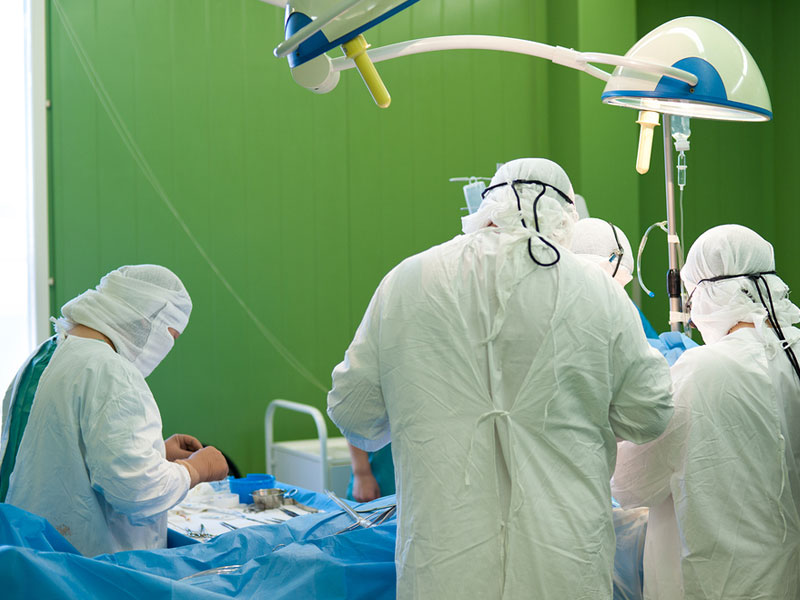Medical Malpractice Reader: Nerve damage after surgery

Nerve damage after an operative procedure is a risk of all surgeries. This writer has reviewed a number of medical malpractice cases over the years wherein a nerve was damaged or completely transected during surgery.
Causes of Nerve Damage
Improper positioning which places too much traction on a nerve can cause nerve damage.
Blocked blood flow (ischemia) to the nerve caused by improper positioning can cause nerve damage.
Compression caused by tourniquets can also damage a nerve by blocking blood flow.
Nerve damage can also occur when a nerve is cut or bruised by a surgical knife or by a needle during the procedure.
Inflammation caused by surgery, infection or other sources around the nerves can also cause damage. In some instances the nerve can be repaired. In others, the damage is permanent.
Nerve damage can also be caused by improperly placed surgical mesh or hardware used to repair injured tissue and/or bone.
Nerve damage to an infant can occur with complicated deliveries
Types of post-operative nerve damage
Types of post-operative nerve damage include neuropraxia, neurotemesis, and axonotemesis.
Neuropraxia causes an interruption in nerve conduction but does not alter the structure of the nerve. This type of damage causes compression and blood supply disruption but it can be completely repaired.
Neurotmesis is the most serious type of nerve damage. It is caused by contusions, stretches, and lacerations. This type of tissue damage causes loss of continuity of tissues along a part of the nerve called the axon. Recovery is possible.
Axontmesis can result in motor (ability to move) or sensory (ability to feel sensation) paralysis. This injury involves a disruption of the neuronal axon. Motor nerve damage can cause weakness, muscle atrophy, paralysis, and twitching. Sensory nerve damage can cause pain, burning, numbness, prickling, and tingling in addition to loss of position awareness. Recovery is possible.
Surgical transection of a nerve
Nerves may be located in atypical anatomical positions in some patients. This can cause the surgeon to cut the nerve without realizing it. Additionally, nerves may not be visualized in some patients, again leading to transection of the nerve. Although nerve stimulators/locators can identify the location of a nerve, their use has not been articulated as a standard of care.
Treatments
Treatments for nerve damage include surgical repair of the nerve, physical therapy, medications, and alternative therapies such as acupuncture, meditation, hypnosis, and biofeedback.
What to check for in the medical records:
- Pre-surgical screening for risk factors for nerve damage. Risk factors include age and obesity.
- Perioperative nurses notes regarding positioning/tourniquets
- Pre-operative radiological studies of the surgical area
- Intraoperative monitoring strips, especially nerve stimulator/locators
- Operative Reports
- Post-operative radiological studies of the surgical area
- Post-operative anesthesia care unit (PACU) nurses’ notes regarding patient assessment
- PACU nurses’ notes regarding subjective complaints voiced by the patient
- Consultant reports, especially neurologist reports
- Incident reports regarding patient complaints that may lead to suspicion of nerve damage
- EMG (electromyogram) studies performed to measure nerve function
- Nerve conduction studies performed to measure nerve function
- Clinic notes from follow up appointments with surgeons or primary care providers
In summary, there are numerous potential causes of nerve injury before, during, and even after surgery. A careful reading of the hospital records can reveal specific mechanisms of injury in addition to the first appearance of patient complaints and symptoms. Diagnostic studies should be reviewed to confirm the presence of nerve injury. Lastly, records from follow up care will show the long term sequelae of the nerve damage.
SOURCES
http://www.healthguideinfo.com/neurological-disorders/p66520/
http://ce.nurse.com/RVignette.aspx?TopicId=744
https://www.ncbi.nlm.nih.gov/pubmed/23265653
http://www.pitt.edu/~position/complications.htm
http://www.beckersspine.com/orthopedic-spine-practices-improving-profits/item/8870-5-points-on-a-new-device-to-prevent-nerve-damage-during-orthopedic-surgery
http://blog.parathyroid.com/vocal-cord-nerve-injury-parathyroid-surgery/
http://www.tutorvista.com/science/nerve-cell-structure-and-function
https://www.lawyersandsettlements.com/search.html?keywords=nerve+damage+&x=0&y=0
https://www.lawyersandsettlements.com/settlements/02167/parkland.html